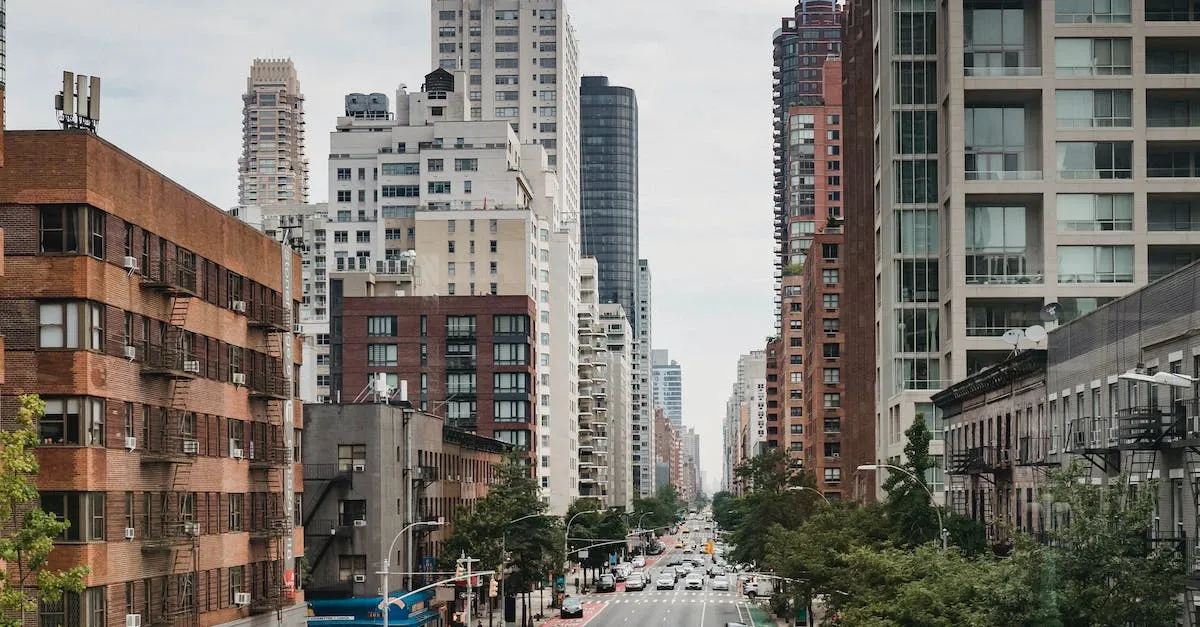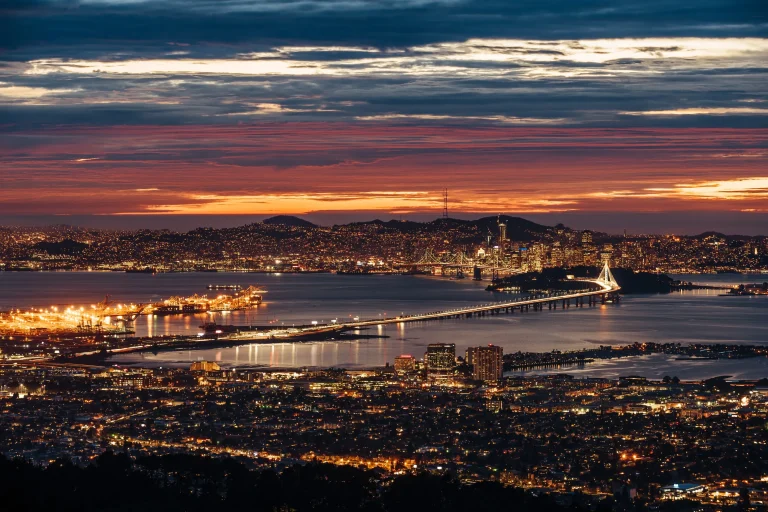The Many Names Of New York City And Their Origins
New York City is known by many names, from the Big Apple to the City That Never Sleeps. With a long and storied history dating back to the 17th century, New York has accumulated a number of nicknames and titles over the centuries that capture the spirit, diversity, and energy of this iconic metropolis.
If you’re short on time, here’s a quick answer to your question: New York City is known as the Big Apple, Gotham City, the Melting Pot, the City That Never Sleeps, and the Capital of the World, among other names. These names highlight the city’s status as a major global city and important center of culture, entertainment, immigration, and business.
In this comprehensive article, we will explore the various names for New York City and look at their origins and historical significance. We will cover famous nicknames like the Big Apple and Gotham as well as lesser-known monikers that provide insight into the city’s past and present. Whether you are a lifelong New Yorker or simply interested in learning more about one of the world’s great cities, read on to discover the stories behind the many names of New York City.
The Big Apple
Origin and meaning
The nickname “The Big Apple” has become synonymous with New York City, but have you ever wondered where it came from? The origin of this iconic moniker can be traced back to the early 20th century. It is believed that the term was popularized by African American jazz musicians in the 1920s who referred to New York City as “the big apple” to signify the city’s status as the ultimate destination for aspiring musicians.
The term gradually gained popularity and was eventually adopted by the general public.
The exact reason behind the choice of “The Big Apple” as a nickname for New York City is still a subject of debate. Some theories suggest that the name was inspired by a horse racing track named “The Big Apple” in New Orleans, while others claim that it originated from a gambling term used in the early 20th century.
Regardless of its true origin, “The Big Apple” has become an integral part of New York City’s identity.
History and popularization
The widespread popularity of the nickname “The Big Apple” can be attributed to a promotional campaign launched by the New York Convention and Visitors Bureau in the 1970s. The campaign aimed to attract tourists to the city by highlighting its vibrant culture, diverse neighborhoods, and iconic landmarks.
As part of this campaign, posters and advertisements featuring the phrase “The Big Apple” were displayed across the city.
The campaign was a resounding success, and “The Big Apple” quickly became synonymous with New York City. It was further popularized through its usage in popular culture, including songs, movies, and television shows.
Today, the nickname is recognized worldwide and is often used affectionately by locals and visitors alike to refer to the city.
To learn more about the history and culture of New York City, you can visit nycgo.com, the official tourism website of the city. The website provides comprehensive information about the city’s attractions, events, and neighborhoods, making it a valuable resource for anyone planning a visit to the “The Big Apple.”
Gotham City
Link to Gotham nickname
New York City is often referred to as “Gotham City,” a nickname that has its origins in literature. The term was first popularized by Washington Irving in his book “Salmagundi” in 1807. However, the nickname gained significant recognition through the Batman comics and movies, where Gotham City is depicted as a dark and crime-ridden metropolis.
The nickname has since become synonymous with New York City’s bustling and often chaotic atmosphere.
Use in popular culture
The nickname “Gotham City” has been widely used in popular culture to refer to New York City. It has become a symbol of the city’s vibrant energy and its status as a global hub for finance, culture, and entertainment.
The name has been used in various forms of media, including movies, television shows, and literature. In fact, the nickname has become so popular that it has even been adopted by other cities around the world, such as Chicago and London, to describe their own urban environments.
The influence of Gotham City as a fictional representation of New York City can be seen in various aspects of popular culture. For example, the iconic Batman logo, with its silhouette of Gotham City’s skyline, is instantly recognizable and often associated with the city.
Additionally, the term “Gotham” is frequently used in marketing campaigns and advertisements to evoke a sense of excitement and allure, highlighting the city’s unique character and appeal.
The Melting Pot
New York City has long been known as the “Melting Pot” due to its rich history of immigration and diverse population. Throughout its existence, people from all over the world have flocked to the city in search of new opportunities and a better life.
This influx of immigrants has shaped the city into a vibrant and multicultural metropolis.
Immigration and diversity
From its early days as a Dutch settlement to the present, New York City has seen waves of immigrants from various countries and cultures. In the 19th and early 20th centuries, millions of Europeans, including Italians, Irish, Germans, Jews, and others, arrived at Ellis Island, seeking a fresh start in America.
This mass migration resulted in a diverse population that brought with it a rich tapestry of languages, cuisines, and traditions.
The city’s immigrant communities have played a significant role in shaping its cultural landscape. Neighborhoods like Little Italy, Chinatown, and Harlem have become iconic symbols of the city’s diversity.
These enclaves allow residents and visitors alike to experience different cultures and traditions without leaving the city.
Did you know? According to the New York City Department of City Planning, approximately 37% of the city’s population is foreign-born, representing over 200 different countries.
The Metropolis mosaic
The diversity of New York City can be seen in its wide range of languages spoken. Over 800 languages are spoken in the city, making it one of the most linguistically diverse places in the world. This linguistic diversity is a testament to the city’s status as a global hub for commerce, culture, and innovation.
The city’s diverse population has also had a profound impact on its culinary scene. From pizza and bagels to dim sum and tacos, New York City is a food lover’s paradise. The city’s diverse neighborhoods offer a plethora of dining options, allowing residents and visitors to explore cuisines from around the world.
Fun Fact: The first pizzeria in the United States, Lombardi’s, opened in New York City in 1905 and is still serving delicious slices today.
New York City’s reputation as the “Melting Pot” is not just symbolic; it is a reflection of the city’s vibrant and diverse population. The city’s rich history of immigration and its continued embrace of different cultures have made it a global metropolis like no other.
The City That Never Sleeps
New York City, often referred to as “The City That Never Sleeps,” is known for its nonstop energy and vibrant atmosphere. From the bustling streets of Manhattan to the vibrant neighborhoods of Brooklyn, there is always something happening in this iconic city.
New York’s nonstop energy
The nickname “The City That Never Sleeps” perfectly captures the fast-paced and lively nature of New York City. With a population of over 8 million people and countless tourists flocking to the city each year, the streets are always buzzing with activity.
Whether it’s the hustle and bustle of Wall Street, the creativity flowing in the art galleries of Chelsea, or the constant stream of taxis and pedestrians in Times Square, the energy in New York City is undeniable.
Nightlife and entertainment
One of the main reasons why New York City is known for never sleeping is its vibrant nightlife and entertainment scene. The city offers a plethora of options for those seeking a night out on the town. From world-renowned Broadway shows to trendy nightclubs and bars, there is something for everyone to enjoy.
The city’s iconic landmarks such as the Empire State Building, Statue of Liberty, and Central Park also come alive at night, offering breathtaking views and unique experiences.
When it comes to entertainment, New York City truly has it all. Visitors and locals alike can catch a comedy show at the famous Comedy Cellar, dance the night away at a trendy rooftop club, or enjoy live music in one of the city’s many iconic venues.
The city’s diverse population and rich cultural heritage also contribute to its vibrant entertainment scene, with a wide range of cuisines, festivals, and events happening throughout the year.
Capital of the World
New York City, often referred to as the “Capital of the World,” holds a prominent place on the global stage. It is a city that never sleeps, brimming with energy, diversity, and a melting pot of cultures.
The city’s global importance can be seen in various aspects of its identity, including its role as a hub for business, culture, and media.
New York’s Global Importance
New York City’s global influence is evident in its economic power and international connections. With a Gross Domestic Product (GDP) of over $1.7 trillion, it stands as one of the world’s largest economies.
The city is home to Wall Street, the financial capital of the world, which drives global markets and influences economic policies. Its strategic location on the East Coast of the United States makes it a vital gateway for international trade and commerce.
The city’s cultural significance is another factor that contributes to its global importance. New York City is a cultural mecca, attracting artists, musicians, and creative minds from all corners of the globe.
Its iconic landmarks, such as the Statue of Liberty, Times Square, and Central Park, have become symbols of American culture and are recognized worldwide. The city’s museums, theaters, and art galleries showcase a rich tapestry of artistic expression, making it a destination for art enthusiasts from around the world.
Business, Culture, and Media Capital
New York City’s status as a business capital is evident in the density of multinational corporations and headquarters located within its boundaries. From finance to fashion, advertising to technology, the city is a magnet for entrepreneurs and industry leaders.
The vibrant startup scene and the presence of renowned institutions like Columbia University and New York University contribute to its reputation as an incubator for innovation and business growth.
When it comes to media, New York City is undeniably at the forefront. It is home to major television networks, publishing houses, and renowned newspapers, shaping the news and entertainment industries globally.
The city’s influence can be seen in the content produced and the trends set by its media outlets. From Broadway shows to world-class film festivals, New York City remains a cultural epicenter that sets the stage for artistic excellence.
Conclusion
New York City has been known by many monikers over the centuries that speak to its status as a vibrant melting pot and nexus of business, culture, and entertainment. While names like the Big Apple and Gotham City are famous globally, the city’s lesser-known epithets are equally evocative. New York’s energy, diversity, and cosmopolitan character will likely inspire many more colorful nicknames in the future.
The next time you visit New York or talk about this great American city, think about the stories behind its many famous names. Whether you prefer to call it the Big Apple, Gotham, or simply New York, this dynamic metropolis truly lives up to its reputation as the capital of the world.








